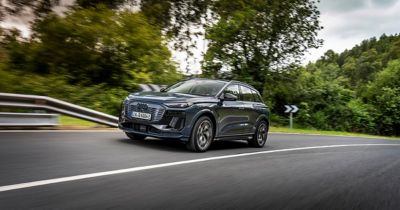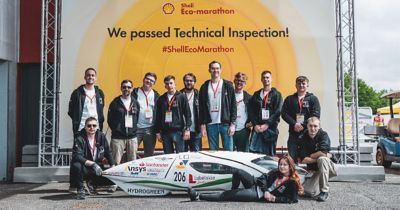-
United States -
United Kingdom -
India -
France -
Deutschland -
Italia -
日本 -
대한민국 -
中国 -
台灣
-
Ansys is committed to setting today's students up for success, by providing free simulation engineering software to students.
-
Ansys is committed to setting today's students up for success, by providing free simulation engineering software to students.
-
Ansys is committed to setting today's students up for success, by providing free simulation engineering software to students.
-
Contact Us -
Careers -
Students and Academic -
For United States and Canada
+1 844.462.6797

Bolid is a hydrogen-powered car made by the students at the Lublin University of Technology in Lublin, Poland. Constructing this project will enable students to learn about new technologies through hands-on projects.
The vehicle itself was designed to participate in the Shell Eco-marathon, a global competition for energy-efficient vehicles, in the “Urban Concept” category. During the competition, participants must drive a specified distance in a limited time and use as little hydrogen as possible. In answer to this problem, Lublin University of Technology students are creating a vehicle that is very lightweight and streamlined to save energy.
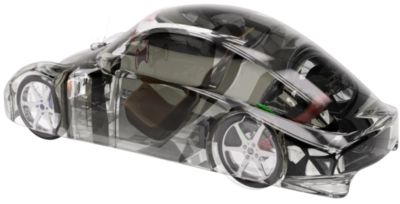
Figure 1. The Bolid car, designed by students at the Lublin University of Technology
How Are Winners Determined?
In the Shell Eco-marathon, the winner in the Hydrogen Fuel Cell energy class is defined by the team whose vehicle achieves the highest energy efficiency. The competition measures how far a vehicle can travel using the least amount of hydrogen fuel, calculated in kilometers per cubic meter of hydrogen. To measure it, all teams must install special devices provided by the organizers. The first one is a flow meter, which measures the flow of hydrogen in liters per hour. There are also two joule meters: One checks energy usage from the auxiliary battery, and the second measures energy used by the drivetrain. At the top, there is a telemetry system that collects data and sends it to the organizers in real time.
Safety: The Most Important Feature
When we think about safety in this project, there are several aspects of the competition that participants must pay special attention to. These vehicle requirements are clearly specified in the competition regulations and verified during the race. First, the vehicle must be designed to be safe for the driver. All participating vehicles must have seatbelts mounted at five different points, which can be easily unfastened using one hand. The monocoque must also be able to withstand pressure of at least 80 kg so the driver can stay safe in the event of a rollover. Also, drivers must show the competition’s safety team that they have appropriate fire-resistant clothing, a racing helmet, and the ability to exit the car without any help within 10 seconds.
The components of the vehicle that will ensure safety of the driver in case of emergency are also taken into account. There are four kinds of emergency signals that simultaneously turn off a vehicle’s engine and cut off the hydrogen supply by closing the main valve. The first signal is the one that can be passed remotely from judges by their telemetry system. Another two are emergency buttons: one inside the car for the driver’s use and one on the outside. Then there is the leakage sensor, which is installed near the hydrogen cylinder. If the sensor detects hydrogen at 1/20 of the hazardous level, it will activate the emergency signal.
Some of the competition’s safety requirements are listed below.
- The vehicle must be equipped with an electric horn (powered by the car’s auxiliary battery) to be able to alert other drivers when passing.
- The vehicle must contain two independent hydraulic braking systems and a “dead man’s switch,” which is a mechanism that stops the machine if the operator becomes incapacitated.
- All safety systems must be powered by the auxiliary battery. Emergency signals from all sources must immediately close the hydrogen main valve and shut off the engine.
- Emergency mode can be switched off only by a reset button.
- All energy produced must be stored in the vehicle’s supercapacitors. The car’s hydrogen consumption must be measured by a flow meter, and all energy consumed must be measured by a joule meter.
Analyzing the Car’s Functionality
Ansys SCADE Architect software enabled the Lublin University of Technology team to produce the traceability matrix (Figure 2). Before the team started creating the system, needed functions were analyzed and a diagram was created, which helped illustrate what was needed. The team started from the top function, called Bolid, and broke it down into smaller functions that could be more easily understood.
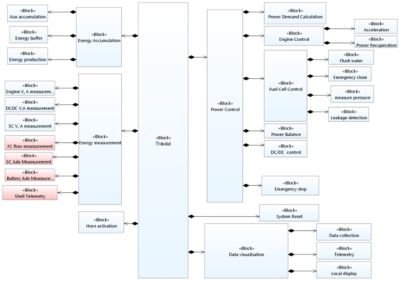
Figure 2. Block definition diagram of the Bolid control system
Creating Safer Architecture
This type of car consists of many components and safety devices. It needs to not only properly produce and manage energy but store hydrogen in a safe way. See Figure 3 for all the elements needed in designing the Bolid car. Colors define energy source for the elements.
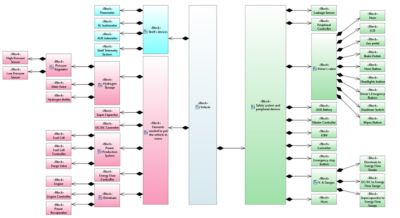
Figure 3. Necessary elements in the design of the Bolid car
Figure 4 shows the top view of the system, including the relationships between components. Blue lines indicate the flow of hydrogen, the yellow lines represent the flow of power, and the white ones represent data transmission, including emergency signals.
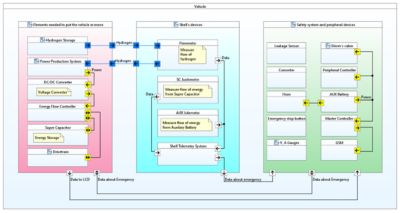
Figure 4. Internal block diagram depicting all the systems of the Bolid car
How Is the Bolid Car Powered?
The vehicle is powered by the fuel cell, which produces energy from the hydrogen stored in the special cylinder. Hydrogen is stored at a pressure of 200 bars, and it flows through the pressure regulator to lower the pressure and give the fuel cell the best working conditions. When hydrogen enters the fuel cell, it’s converted into power and water. Unnecessary water is blown out using some of the hydrogen through the purge valve and pipes outside the car.
Meanwhile, energy is passed to a DC-DC converter, where the voltage is adapted to the needed value. When produced energy is passed from the fuel cell through the DC-DC converter, it goes to the energy flow controller. This is the “brain” of the energy system and guides energy to the places where it’s needed. In the case of freshly produced energy, it’s passed to the supercapacitor — a stored bank of energy that can retrieve it very fast when needed.
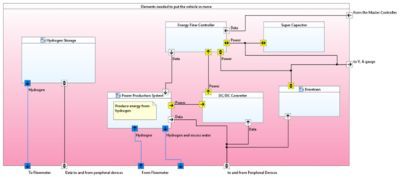
Figure 5. Subsystems of the Bolid propulsion system
Developing Electrical System and Peripheral Devices
The vehicle’s electrical system is powered by the auxiliary battery, which is charged before departure onto the track. This battery powers all peripheral devices and controllers. The main part of the electrical system is the peripheral controller, which receives, processes, and sends large amounts of data to other components. Almost all information in the system needs to flow by the peripheral controller. Another part of the electrical system is the master controller, which controls the LCD, all buttons in the driver’s cabin, and process data from the GSM system.
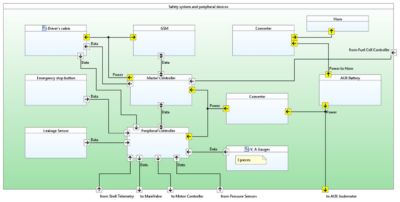
Figure 6. Diagram of the car’s control system components
Design More Easily With SCADE Architect Software
Despite being a student project, Lublin University of Technology’s participation in the Shell Eco-marathon is very complex because of all the requirements that must be met. A special focus on safety needs to be completed using efficient and right tools and methodology. Every tool that can help is worth its weight in gold. This is why all the team’s diagrams were prepared using SCADE Architect software, which enabled the team to outline both the main structure of the system and its individual components. Thanks to that, meeting the requirements was easier because each part of the vehicle was shown to perform optimally and fulfill competition rules.
For developing safety-critical systems, try a free trial of SCADE Architect software.
The Advantage Blog
The Ansys Advantage blog, featuring contributions from Ansys and other technology experts, keeps you updated on how Ansys simulation is powering innovation that drives human advancement.














